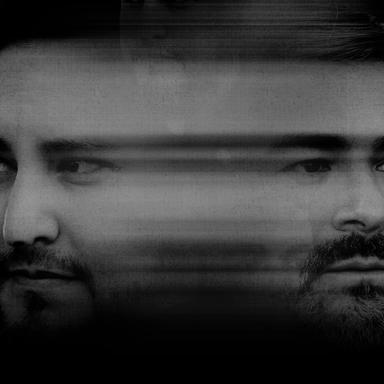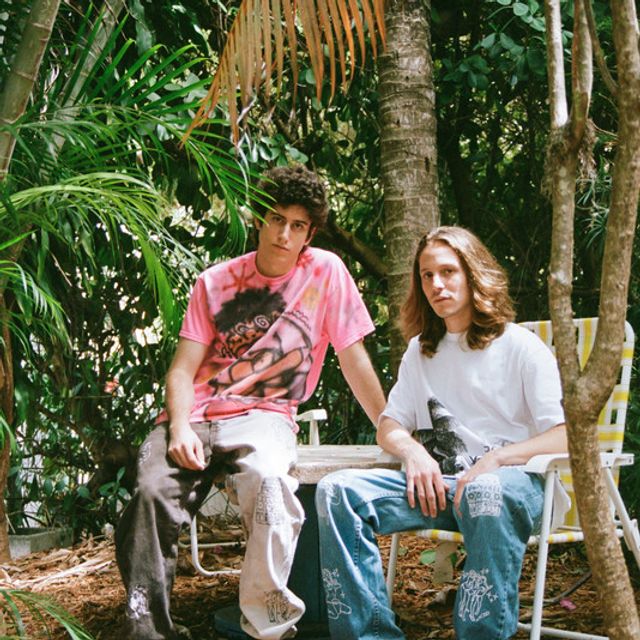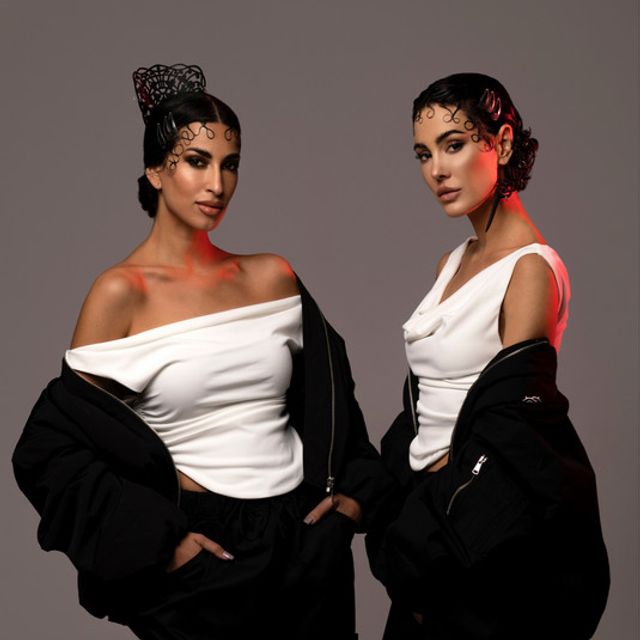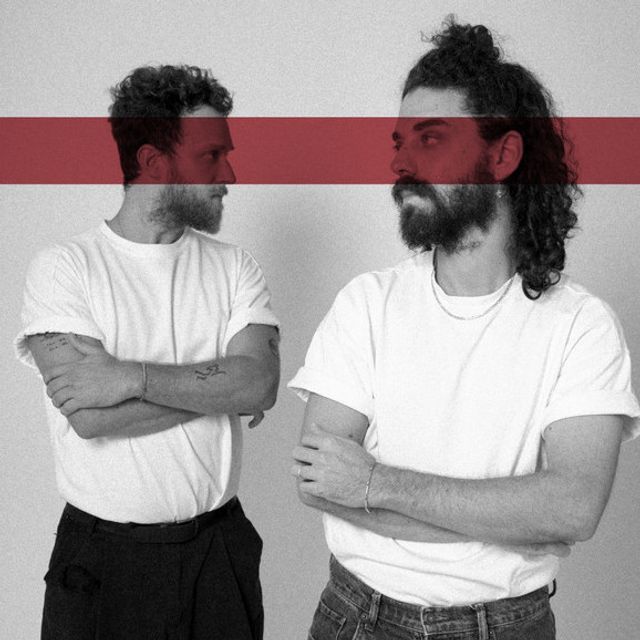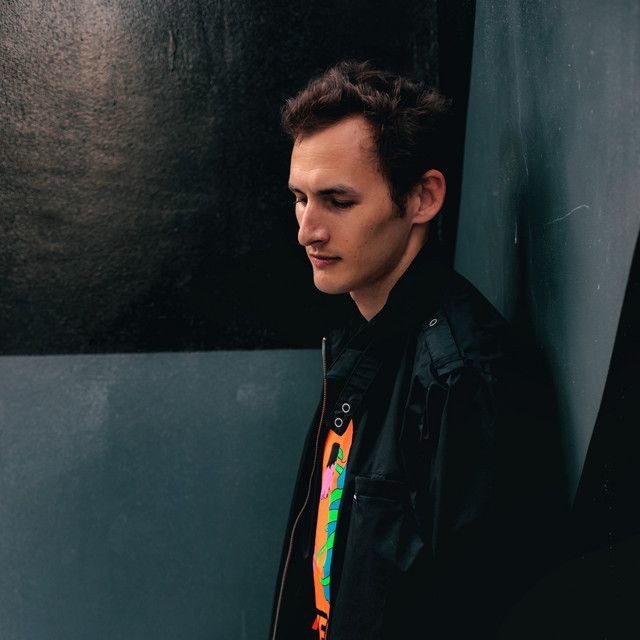Artist Spotlight
Cell Injection is the collaborative project of Drumcell (real name Moe Espinosa) and Truncate (real name David Flores), each a household name in West Coast techno. The genre is often heavily intellectualized by its core community, but the two artists have built a substantial following by not overthinking things. “Outside of our music careers, David is amongst the very few people in the world that I talk to on a daily basis,” says Espinosa over a three-way video chat with Flores and Gray Area. “Trying to actively create space for Cell Injection doesn’t really feel like a necessity. It’s just a natural thing that happens when the time comes for it, an extension of what we do and who we are.” They’ve each given their fair share of thought to music, to be sure. “I’ve always developed a strong admiration for the musicianship that goes into things,” Espinosa says. “I recall at a young age watching everything from Miles Davis to Eddie Van Halen to any musician who was incredibly skilled at what they did and saw how they crafted their skills with an instrument. That intrigued me, and I wanted to be good at something like that. I liked the idea of mastering something.” Flores, on the other hand, loved music deeply but initially saw no future in it. “The only difference between Moe and me was I never wanted to pick up an instrument,” he says. “I always just enjoyed listening to music and discovering different types of music at a young age. I had cousins in the mid to late ’80s when I was about five or six throw backyard family parties where DJs would play hip-hop and electro and stuff. I’ve always been a big fan of that stuff. “It wasn’t until like the early to mid-’90s, when I got into dance music and saw DJs play house and techno, that I got even more interested in the music,” Flores continues. “I was like, ‘I wanna DJ. I wanna learn how to scratch. I wanna do all that stuff. That was how it started in the beginning.” Espinosa, meanwhile, had worked in L.A. recording studios since the tender, young age of 13. He graduated college with a degree in music production and engineering, and he would go on to mix and master records by commercially famous artists like George Clinton and Whitney Houston. He saved the money he made from these endeavors to fund the techno projects closer to his heart. “I think people underestimate how massive the rave scene was on the West Coast in the ’90s,” Espinosa argues. “But the one thing that was very common across the rave scene in the ’90s was that techno really wasn’t a mainstay. Things like trance, drum and bass, and hardcore were big, but techno was kind of on the fringe. There were people like DJ Hyperactive and Adam X and Frankie Bones who permeated techno on the West Coast, but it was still on the fringe of things.” Flores and Espinosa met in this very void where an L.A. techno scene had yet to coalesce. “We have this mutual friend, Victor, who used to work at this record shop in L.A. called Higher Source in like 2000 or 2001,” Flores recounts. “I used to go shopping there to buy techno, and he was friends with Moe. He was like, ‘Hey man, I gotta hook you up with these guys that always come in here and buy techno records. They’re going to start a party crew and start throwing events.” Espinosa adds, “I think our mutual friend saw David’s dedication to the music and knew I was trying to start a record label and create this movement of a techno scene on the West Coast when it literally didn’t exist. Our mutual friend said, ‘Hey, dude, I got this dude David who comes into the record store all the time. He makes techno and lives in Downey and you guys gotta meet.’ And I was like, ‘Yeah, fuck it.’” The two were fast friends. They got along without any effort, laying a solid foundation for their creative process to flourish in later years. And while Flores had no designs on becoming a famous DJ, Espinosa saw potential in him that he perhaps didn’t see in himself. When they first visited in a studio, the music Flores showed him floored Espinosa. “From what I remember personally, David didn’t really have this incredible desire push a career as a producer,” says Espinosa. “It seemed more like this dude who was like making beats for fun the way a kid would play on a PlayStation. I heard what this dude was doing and I was fucking floored. I was just like, ‘What the hell, dude? You’ve gotta release this shit.’” Flores released his debut solo track “Getting Excited” under the moniker David F. It appeared on Negative -1, the first compilation album of Droid Recordings, the epoch-making label Espinosa founded alongside the Raiz brothers at the turn of the millennium. Accompanying “Getting Excited” on the tracklist were songs by artists like Developer, Hyperactive, and Automat. Espinosa himself had several tracks on the compilation, including “Sycorax,” which he enlisted Flores to remix. Droid Behavior was the event side of the brand. With the help of a simple email list, their parties grew from dozens of attendees to thousands, effectively providing proof of concept for West Coast techno rave promoters. Flores — who adopted a new moniker, Audio Injection — was a repeat booking at these carefully curated gatherings. In 2007, Flores and Espinosa teamed up on their first collaborative record. The Kommunicate EP made them acutely aware of their creative chemistry and received international acclaim. The track “Bottle Opener,” in particular, garnered support from Dutch techno figurehead Speedy J and German superstar Chris Liebing for its bouncing groove and idiosyncratic sound design. This won them remix requests from Liebing and an entree into his CLR imprint. The increased exposure landed Espinosa and Flores their first international gigs, not the least of which was a six-hour performance at the monumental Berlin club Berghain. Liebing shared an hour of the set to his CLR Podcast, which spread the names Drumcell and Audio Injection even further. “The CLR Podcast was easily one of the most listened-to and biggest podcasts globally around the world,” says Espinosa. “It reached a lot of people, and artists would get gigs from doing the CLR Podcast back in the day. It probably did more for your career than releasing a record.” At the time, though, the two had yet to perform together as Cell Injection. They had given the name — which combined a word from each of their aliases — to a 2009 EP in which their budding artistic synergy continued to blossom. On remixing duties for the Cell Injection EP were Acid Circus, Tim Xavier, and Tony Rohr. When, then, did they adapt Cell Injection into their stage name? At one of Droid Behavior’s beloved Interface parties, though neither Espinosa nor Flores could say with certainty which it was. “We decided that David and I should play together for once as opposed to just writing music together,” says Espinosa. “And I don’t even remember exactly who came up with the idea to put it on the flyer as Cell Injection instead of Drumcell vs. Audio Injection.” He continues: “I wish I had some sort of like memory of that, but just like I said, all of this stuff has never been forced or led by some kind of like contrived idea to do things. It’s always been just this natural progression of like, ‘Eh, it happened.’ And then, like, ‘Oh, cool, it’s working. Oh, now this happened. Oh, cool. Let’s continue to do it. Yeah, that works.’” Flores explains that a Cell Injection set is “us meeting in the middle with our own individual elements and stuff. I tend to play a bit more jacking funky, and Moe likes to play a little bit heavier and darker. When we do a Cell Injection set, I won’t get too funky and jacking, and he won’t go super dark or heady.” In the years since they started the Cell Injection project, Both Flores and Espinosa have encountered their fair share of challenges. At certain points, they found themselves straying from the spontaneous innocence to which they arguably owe much of their success. “Lately, I’ve been trying to get back to how I used to make music 10 years ago, just making tracks and not caring about if it’s gonna be well received,” says Flores, who now performs solo under the alias Truncate. “I got too caught up on, ‘Oh, is this gonna do well? Is this gonna work well? Blah, blah, blah.’ I gotta get out of that mentality and get back to just making tracks — and hey, if it lasts more than a week, great. If it doesn’t, then just move on. Just gotta keep going.” Espinosa adds: “I think that’s a natural progression for an artist period. I don’t care who out there is such a purist techno person that they don’t give a shit about what anyone thinks about their art. I call bullshit on it. I think on some sort of subconscious level that starts to permeate you in some way.” In 2018, Espinosa and Flores found new inspiration in a venture alongside visual artist OKTAform. They began hosting techno gatherings under the banner Observe, first in Los Angeles and then in Detroit, Miami, and Chicago. Each outing distills the raw essence of underground electronic music into its purest form, at once paying homage to the original West Coast techno parties and building on the blueprint further. “I really wanted to bring David into the seat with us all to have his input and his say in how we curate the events, because I think he has an incredibly positive and unique perspective towards curating lineups and how we put together events,” says Espinosa. “We’re super happy with the direction that it’s taken. Our production has gotten tighter, our lineups have gotten better, and so has our entire ethos and cultural look at how events should be curated.” “Unlike most other promoters who just wanna like book the next biggest DJ and throw a party and make money and then go on, we perceive the whole concept of throwing events and doing parties as an art form in its own,” he continues. “We don’t wanna just throw parties for the sake of throwing parties. We want to make an art form out of the ability to promote and put something together that’s special enough that people walk away and remember it for a long period of time.” Flores adds: “On top of that, it’s like we try to have like every party be unique in some sort of way, not just having a warehouse and putting some lights and stuff in it, but something special that people remember. We also want to get to the level where we could book anybody and people will come regardless of the names.” Between them, Drumcell and Truncate boast a wealth of experience in techno — from the most granular aspects of music production to the curation of historic events. Working together as Cell Injection reminds them to take a backseat during moments of shared creative drift and simply allow the art to create itself.
